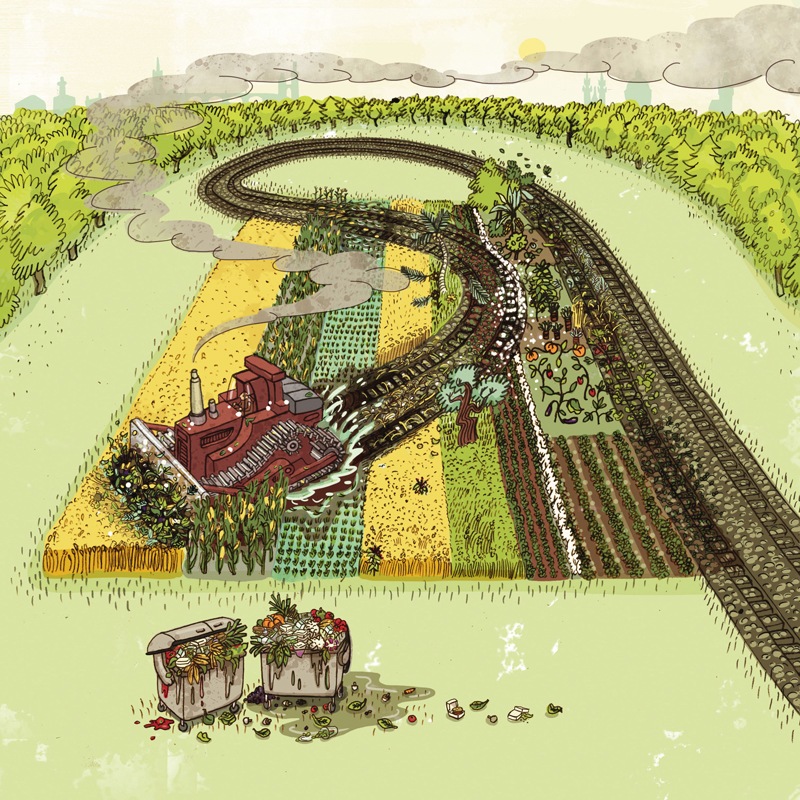If we were to consume 3,500 kilocalories per day throughout our life, we might simply burst one day. Adults with a light level of physical activity require around 2,000 kilocalories per day. To put this amount on a plate, at a global average more than 4,600 kilocalories must be harvested on the field – more than twice the amount!
Food ends up in the bin so that everything in the supermarket looks fresh and perfect, and is available at any time; but also because we buy more than we eat. Not all losses can be avoided, e.g. vegetable peel, but most of them. In Europe and other industrialized regions most food waste occurs in processing, retail, gastronomy and private households. In tropical and less industrialized regions of the world the share of food that doesn’t make it from the field to processing is the biggest: mouldy, spoiled, eaten by rats and insects, or simply not harvested. Such post-harvest losses also occur in the EU. Since carrots, potatoes and other vegetables often don’t fit the norms of retail, tonnes of them are destroyed or left in the field.
Links
![]() Food wastage footprint – Analyzes the impact of food waste on climate, water, land use and biodiversity. Food and Agriculture Organisation (FAO) (2013).
Food wastage footprint – Analyzes the impact of food waste on climate, water, land use and biodiversity. Food and Agriculture Organisation (FAO) (2013).
![]() Reduce your foodwaste footprint
Reduce your foodwaste footprint
– Discover the main findings and tips of the new FAO report via this 3 minute video animation
![]() Love Food Hate Waste
Love Food Hate Waste
– Raises awareness and gives tips on reducing food waste, including recipes for using your food scraps
![]() Think.Eat.Save: Reduce your Foodprint
Think.Eat.Save: Reduce your Foodprint
– Ways to save food and money
![]() SAVE FOOD
SAVE FOOD
– Infographics and statistics on the 1.3 billion tonnes of food lost or wasted per year
![]() FAO Tool-Kit
FAO Tool-Kit
– Recommendations on how food waste can be reduced at every stage of the food chain
![]() Taste The Waste
Taste The Waste
– Documentary challenging why we throw away so much food and how we can stop it
![]() WASTE
WASTE
– An informative short film on the relationship between food waste and resource waste


